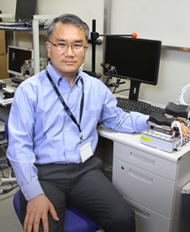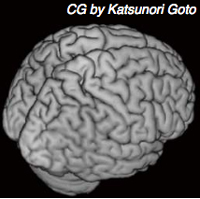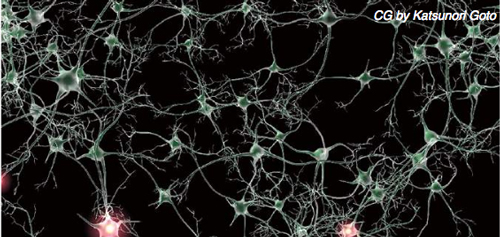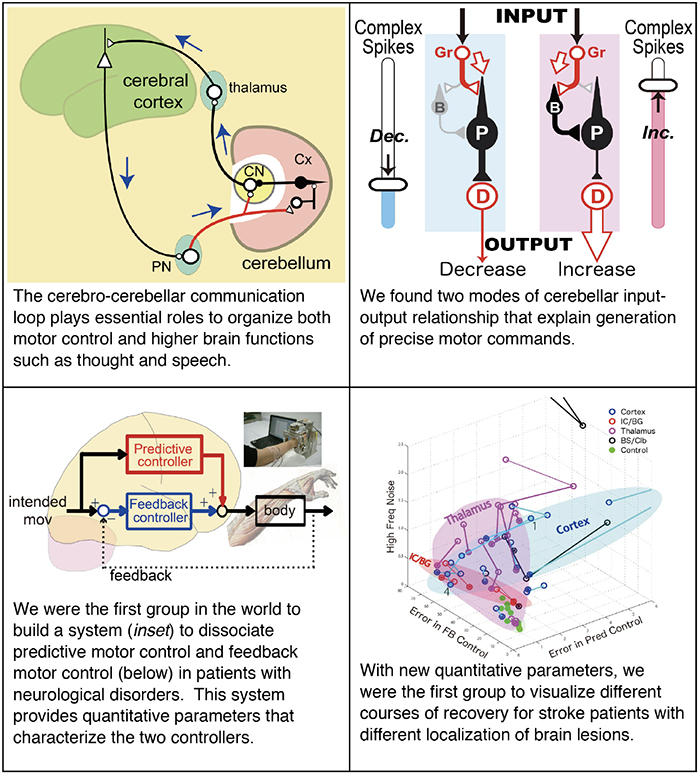
- HOME
- Laboratory of Motor Disorders
Laboratory of Motor Disorders

Laboratory Head
Shinji Kakei
Brief summary of research
From Neuron to Action and its Disorders
We try to understand how the brain controls our movements in the real world. We study the process of action generation at a single neuron level using animal models to understand how movements are processed in the brain. We also study actions of healthy people, as well as those with neurological disorders, such as cerebellar disorders, Parkinson’s disease or strokes. We look for building-blocks of motor control with multidisciplinary approaches. Our tools include various neurophysiological recording techniques (single unit recording, electromyography (EMG) and electro-encephalography (EEG)), brain stimulation, neuroimaging, analysis of movement kinematics and a large-scale modeling. We have two long-term goals: 1) to understand the basic function of the motor structures of the brain including the cerebellum, the basal ganglia, and the motor cortex; and 2) to understand how our brain controls our movements on the basis of the findings in 1).
“Through our research, we are trying tounderstand the brain.The brain was first created to control movement and extended to control higher brain functions.”

“The brain mechanism for motor control must provide a basic framework to understand higher brain functions.”
The brain is an assembly of neural networks.

Hot Topics of Our Research

Members
Laboratory Head Shinji Kakei
- Min Kyuengbo
- Takahiro Ishikawa
- Takeru Honda
Selected Publications
- Kakei S, Lee J, Mitoma H, Tanaka H, Manto M, Hampe CS. (2019) “Contribution of the Cerebellum to Predictive Motor Control and Its Evaluation in Ataxic Patients.” Front. Hum. Neurosci. 13:216.
- Tanaka H, Ishikawa T, Kakei S. (2019) "Neural Evidence of the Cerebellum as a State Predictor.” Cerebellum. 18(3):349-371.
- Tomatsu S, Ishikawa T, Tsunoda Y,Lee J, Hoffman DS, and Kakei S.(2016) “Information processing in the hemisphere of the cerebellar cortrexfor motor control of wrist movement.” J. Neurophysiol. 115:255-270.
- Ishikawa T, Tomatsu S, Izawa J,and Kakei S. (2016) “The cerebro-cerebellum:Could it be loci of forwardmodels?” Neurosci. Res. 104:72-79.
- Lee J, Kagamihara Y, and Kakei S.(2015) “A new method for functionalevaluation of motor commands inpatients with cerebellar ataxia.” PLoS One 10:e0132983.
- Ishikawa T, Tomatsu S, TsunodaY, Lee J, Hoffman DS, and KakeiS. (2014) “Releasing dentatenucleus cells from Purkinje cellinhibition generates outputs fromthe cerebrocerebellum.” PLoS One 9:e108774 (pp.1-16).